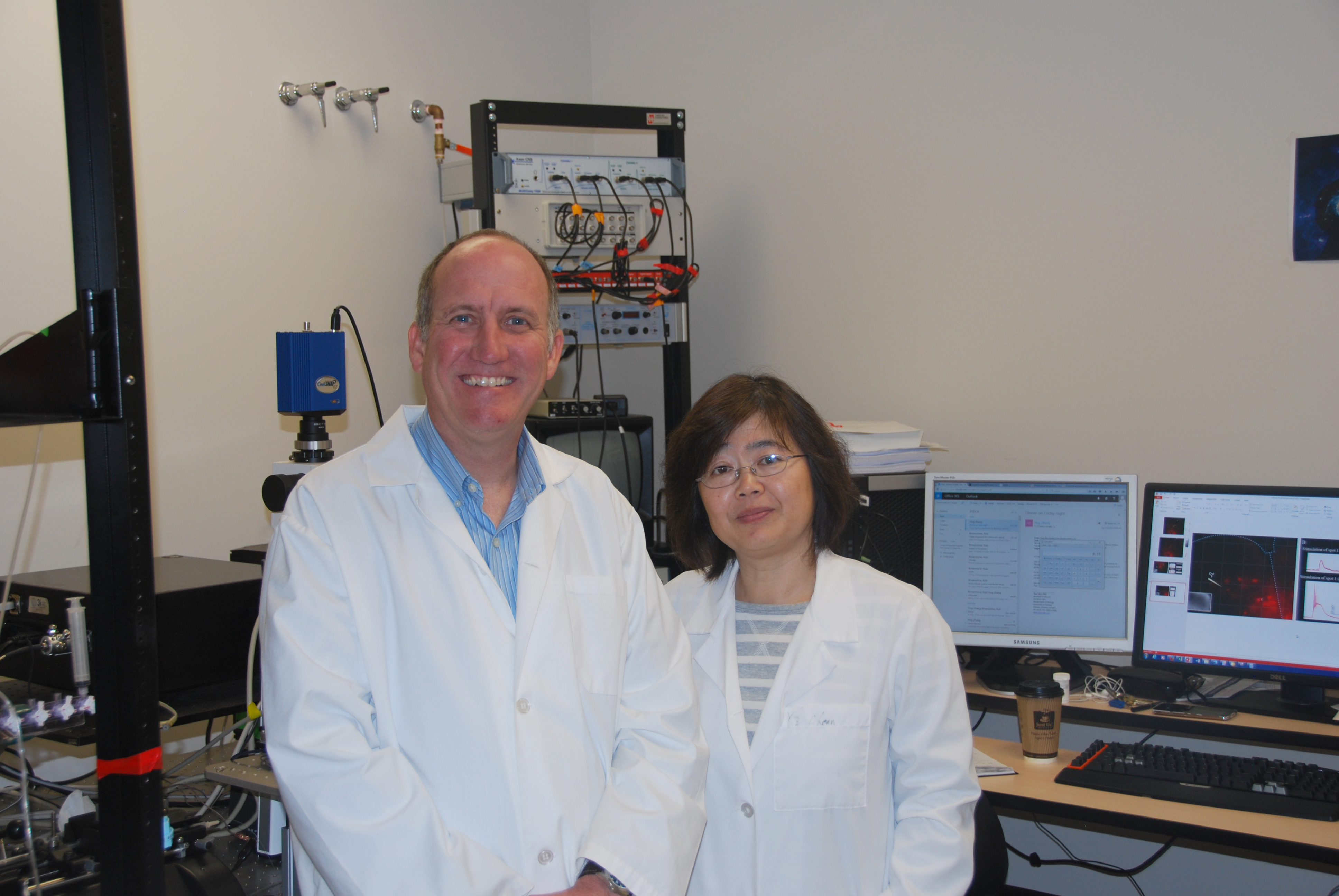Media Releases
» Go to news mainDalhousie medical researchers bypass nerves to activate muscles directly with light

(Halifax, Nova Scotia)—Neuroscience researchers at Dalhousie Medical School and the Brain Repair Centre in Halifax, N.S., have shown that muscles can be activated directly with light, bypassing the nervous system and offering a potential solution to muscle-wasting and paralysis caused by nerve injuries and neurodegenerative diseases.
“We’ve found we can prevent atrophy in completely dennervated muscles by shining light on them through the skin for an hour a day,” says Dr. Victor Rafuse, professor in the Department of Medical Neuroscience and director of the Brain Repair Centre. “Others have used light to successfully stimulate nerves, but we are the first to bypass the nerves and go straight to the muscles. This is vital, because the nerve tissue is completely destroyed in many injuries and in diseases like ALS, so you can’t rely on stimulating nerves to activate muscles.”
The very prominent scientific journal, Nature Communications, published the researchers’ findings on October 13, 2015.
To test their theory that light could be used to activate muscles directly, the research team used mouse genetics to insert a light-activated ion channel, first discovered in the single-celled aquatic organism, Chlamydomonas reinhardtii, into a line of mice. This enabled their muscles to contract when stimulated with blue LED light.
“Our next step is to develop a means of delivering the light-activated ion channel directly to the muscles, without altering the genome,” Dr. Rafuse says. “Then we would have a viable therapeutic strategy for human use.”
For example, Dr. Rafuse suggests that the gene encoding the channel could be delivered into the hand muscles of a person with a peripheral nerve injury that has severed the nervous system’s connection to the hand. “We see the possibility of developing a ‘light glove’ they could wear to prevent atrophy in those muscles and use to stimulate muscle contractions whenever they want to grasp something.”
This developing technology has many potential uses, including the ability to stimulate the diaphragm in people with ALS who are suffering from respiratory problems due to the loss of the motor neurons and synaptic connections that innervate their breathing muscles.
The research team included surgery resident and PhD candidate, Dr. Philippe Magown, masters student Basavaraj Shettar, and assistant professor of Medical Neuroscience, Dr. Ying Zhang, in addition to Dr. Rafuse.
-30-
Media contacts
Melanie Jollymore
melaniejollymore@eastlink.ca
902-827-3126
Cory Burris
cory.burris@dal.ca
902-494-4247
Images
 |
Drs. Victor Rafuse and Ying Zhang are part of the Dalhousie team that discovered a light-activated pathway to restoring muscle function. |
Comments
comments powered by Disqus
Recent News
- Media opportunity: Researchers reveal the critical role metabolism plays in reducing the risk of frailty in older adults and how the two are closely linked
- Press Release ‑ Introducing Dalhousie University’s 2024 Board of Governors' Award winners
- Media opportunity: Repeated, small hits to the heads of football players may damage the small blood vessels of the brain: Dalhousie University research
- Media release: Dalhousie‑led initiative awarded $1.9M in federal funding to help agriculture sector meet emission reduction targets
- Dalhousie announces launch of Bringing Worlds Together—a $750‑million campaign for transformational change
- Please join Dalhousie University for a special announcement
- Media opportunity: Dalhousie University researchers find migrant workers in Nova Scotia face discrimination, overcrowded housing and wage theft, but also receive support from their home countries in addressing mistreatment
- Media opportunity: Fowl language: Dalhousie University researcher uses AI to crack the code of clucks and unravel chicken chatter secrets, opening the door to an improved quality of life
